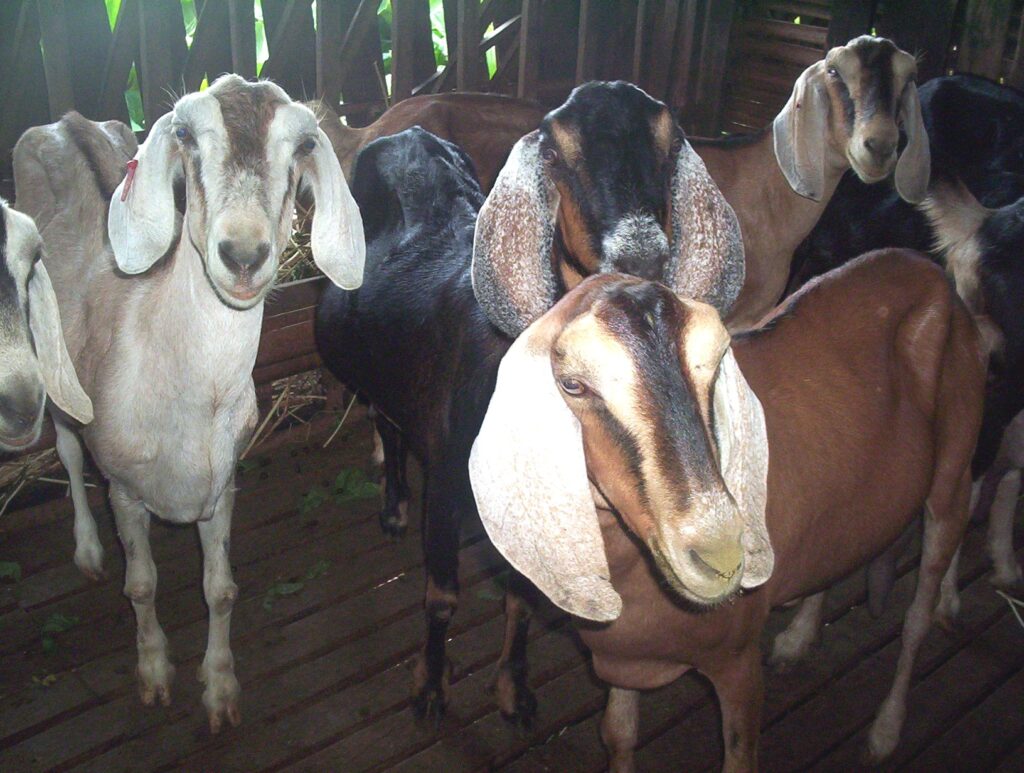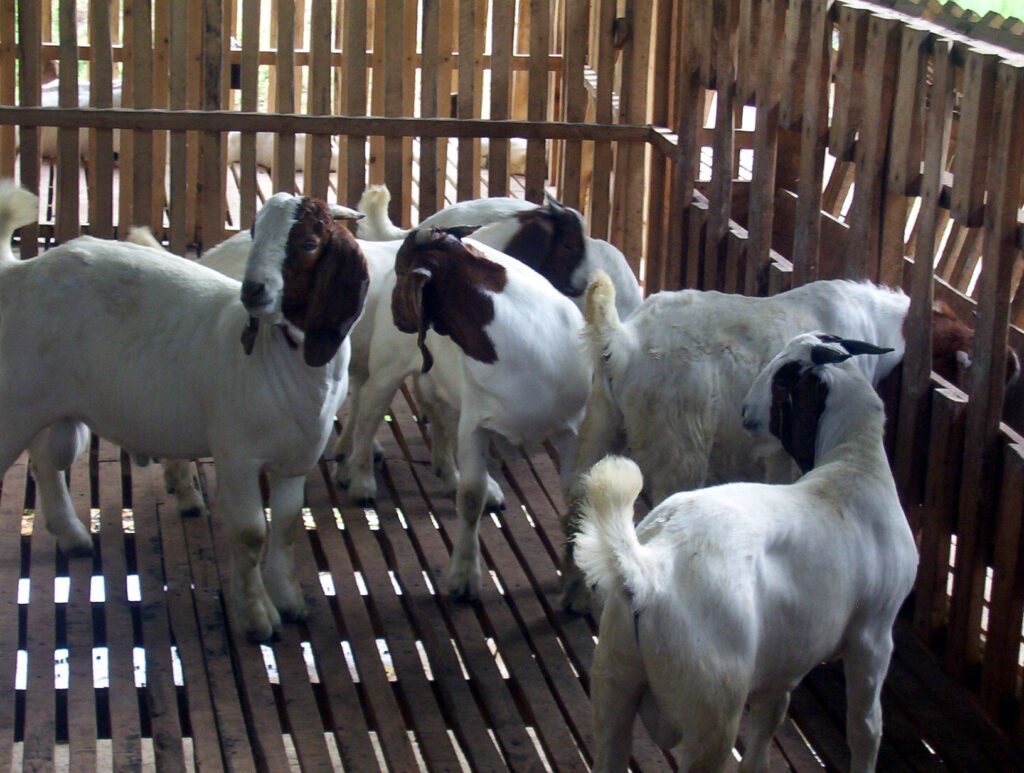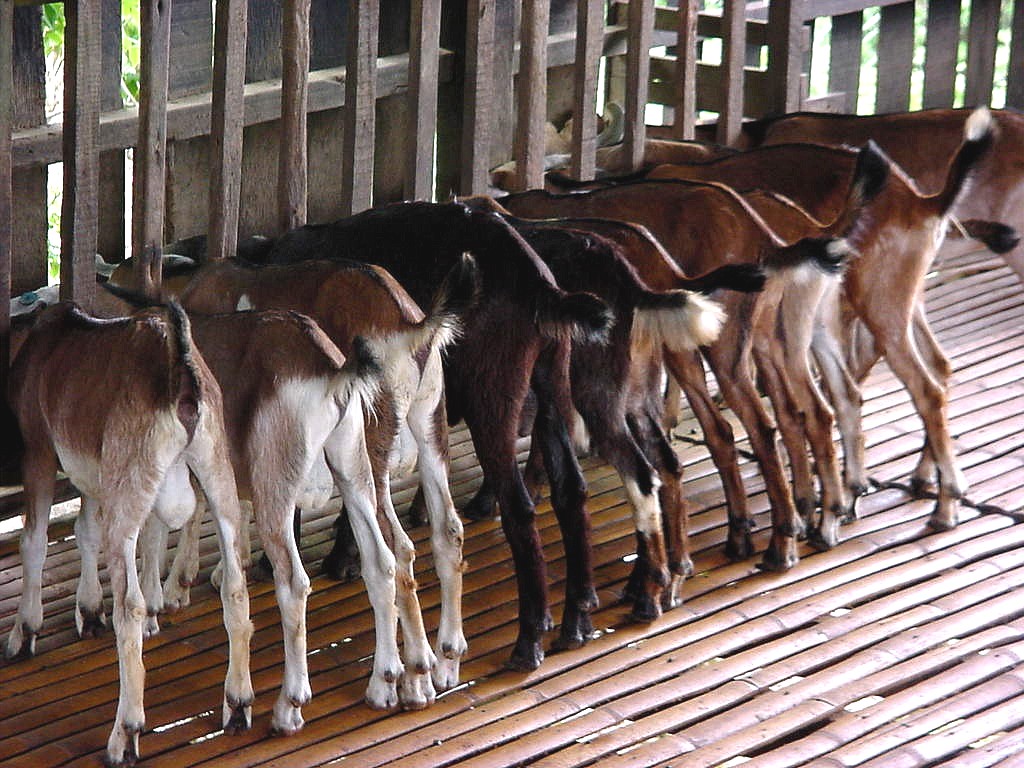Text and Photos by Henrylito D. Tacio
In the introduction of his book, Goat Husbandry, author David MacKenzie wrote: “When man began his farming operations in the dawn of history, the goat was the kingpin of the personal life, making possible the conquest of desert and mountain and the occupation of the fertile land that lay beyond. The first of Man’s domestic animals to colonize the wilderness, the goat is the last to abandon the deserts that man leaves behind him.”
MacKenzie further wrote: “For ever the friend of the pioneer and the last survivor, the goat was never well loved by arable farmers on fertile land. When agriculture produces crops that man, cow and sheep can consume with more profit, the goat retreats to the mountain tops and the wilderness, rejected and despised – hated too, as the emblem of anarchy.”
Goats are considered the first hoofed animals ever tamed. In the Biblical town of Jericho, people kept tame goats as long as 6,000 or 7,000 years before Christ. The ancient Greeks and Romans paid great attention to the rearing of goats. Anyone familiar with classical authors will remember how frequently these animals are mentioned, especially in pastoral poems.
In the Philippines, more and more people are now raising goats – in their farms, in their backyards, and even in their ranches! “We have been raising goats since the early 1970s and we have observed that the demand for the animal has been growing,” admits Jethro P. Adang, the current director of the Mindanao Baptist Rural Life Center (MBRLC) Foundation, Inc. MBRLC is a non-government organization based in the southern part of the Philippines.
Israel Guanga, MBRLC livestock specialist and goat supervisor, agrees. “We cannot cope up with the demand of our clienteles,” he admits. “We have people coming all the way from Cebu and other neighboring provinces just to buy breeding stock from us.”
Just like cows, the goat is valued mainly for its meat and milk. “As a milk producer, the goat is inevitably more efficient where the available fodder is of such low quality that a cow can barely live,” wrote MacKenzie in his book.
“Indeed, I find among the writers, that the milk of the goat is next in estimation to a woman; for it helpeth the stomach, removeth oppilations and stoppings of the liver and looseth the belly,” wrote William Harrison echoing the opinion of 2,000 years of medical writing. Hippocrates commended the virtues of goats’ milk and, according to Homer, some of the gods and goddesses themselves were reared on it.
There is probably no other animal – except dog – with a greater variety of range than the goat. “It is met with in most parts of the world, and appears as much at home in the cold regions of Norway and Sweden as in the hot countries of Asia and Africa,” notes H.S. Holmes Pegler in The Book of the Goat.
At least 12 goat species are known to animal scientists, but only a few breeds are tended for their economic and commercial values. Below are the most common breeds:
Anglo-Nubian- The name Nubian came from Nubia, a desert section of Northern Sudan. Its average weight is about 65 kilograms. Some are born with horns, while others are hornless. It has long drooping ears, a distinct Roman nose, and a prominent forehead. Its coats color may black, tan and white, or red and white, but it may be any of these colors without markings.
This is a dual-purpose breed with its prime value as a heavy meat producer. Nubian goats produce an average of two liters of milk daily. The butterfat content there is about 5.6 percent.

Angora- This breed originates from the ancient Angora region in Central Anatolia province of Turkey, now known as Ankara. Angoras offer the raisers a highly viable diversification away from traditional crop cultivation and farm produce, which invariably are in surplus.
Angoras are primarily raised for their fleece and secondarily for their meat, while their milk yield is considered “fair.” They are browsers, meaning they nibble at leaves and grasses rather than graze where the animals crop the grass or forage. Angoras as shorn twice a year of their fleece, and they need not be dipped after shearing, unlike sheep.
Saanen- This breed originated in the Saane valley of the famous Swiss Alps. It has been exported to many countries worldwide and is considered one of the most widely distributed of the improved breeds. It weighs around 65 kilograms at maturity. Some are hornless, although horned but disbudded ones are preferred. It has a straight nose and erect ears. Its colors are either pure or creamy white.
The average milk production of Saanen is three liters, with a butterfat content of about 4.3 percent. Although it is nicknamed the “Queen of Dairy,” this breed performs poorly in Asia, including the Philippines.
Toggenburg- Also from the Swiss Alps, the name originated from Obertoggenburg. This breed weighs about 52 kilograms at maturity. It is hornless with a dished nose and erect ears. The color is chocolate brown with two white stripes on the face and white on the legs below the knees.
Toggenburg has an average milk production of three liters daily, with a butterfat content of 3.8 percent.
French Alpine- This breed is found throughout France’s goat producing districts but particularly in the Pays de Loire. It weighs about 56 kilograms at maturity. Some have horns, and others are hornless. It has erect ears and a straight nose. It has a multicolored coat with no standard markings.
In the Philippines, its adaptability to local conditions ranks second to Nubian. Its daily milk production is three liters, with about 4.5 percent butterfat.
Philippine or common goat- Small but hardy, this goat weighs 25 kilograms at maturity. Its average daily milk production is only about 350 grams, with a butterfat content of about 4.6 percent. Its coat color is either red or black or a combination of these colors. This type of goats is found throughout Asia.
Dadiangas goat- This is common in Dadiangas (now known as General Santos City), South Cotabato. It is a mixture of native, Nubian, and Jamnapari goats, and some may have some Alpine or Saanen blood. It varies in color. Its milk production and butterfat content are a little higher than the native goats. This breed thrives best in the drier areas of the country.
Boer goat- This breed originated in South Africa, where the word “boer” means “farm.” The Boer has been a registered breed in South Africa for fifty years and is raised strictly for its meat. The Boer goat can be easily recognized by its beautiful full white body, Roman nose, pendulous ears, and reddish-brown or light to dark brown head.

If you cannot secure purebred stock, you can start with the best female goats available in your area. Mate them with purebred or upgraded stock. Then, select only their offspring and discard the undesirable ones (you can either sell them or butcher them for meat). Continue this procedure each year, and you will have desirable goat stocks.
The Laguna-based Philippine Council for Agriculture, Forestry and Natural Resources Research and Development (PCARRD) states that to start a profitable goat raising business. One has to have the following production inputs: (for backyard operation) investment – goat house, breeding stocks; operating expenses – veterinary medicines, vaccines, concentrates, additional feed supplements (for commercial or large-scale operation) fixed investment – land, goat house, fences, pasture area, water pump, feeding trough, spade, wheelbarrow, and ropes; stocks – breeding does and breeding bucks; operating expenses – veterinary medicines, drugs, vaccines, feed supplements, and goat rations, labor, repair and maintenance of goat house, fences, equipment, and pasture.

